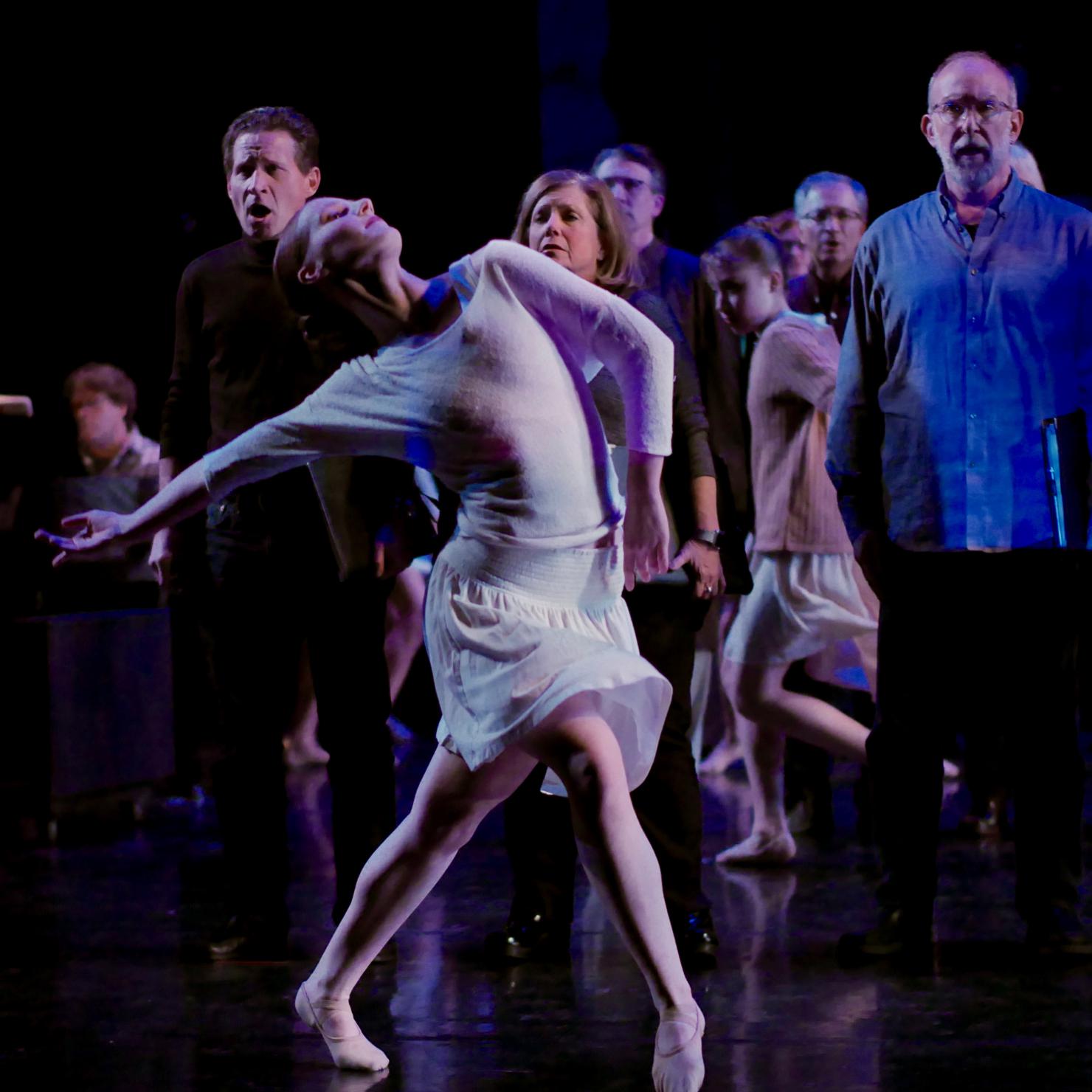
A lusty Carmina Burana from Minnesota Dance Theatre
ReviewAt the Cowles Center for the Arts in Minneapolis, Minnesota Dance Theatre closed their fifth annual production of Carl Orff’s Carmina Burana. The production was in collaboration with Minnesota Chorale.
The show began very casually, no curtain and before the performance began the singers and dancers were on the stage warming up. The casual dress of the chorus members was a bit distracting. They were a voyeuristic force, standing on the same level as the dancers and at times turning their backs to the audience to sing around the dancers. While voyeuristic, they seemed powerless, thus representing the wheel of fortune that sums up the work. This choreography is the work of the late Loyce Houlton, founder of Minnesota Dance Theatre; she obviously knew the music well, her choreography aiding in conveying the music, and book-ending the work’s prologue and epilogue (the famed “O Fortuna”) with the chorus standing in lines, the dancers frantically threading through their ranks.

I am by no means an Orff scholar, so my analysis may be subjective. The collection of twenty four poems from a larger collection written by medieval monks with varying themes, yet this production seemed to hone in on just one: lust. The sexual nature of the choreography became more and more aggressive as the show continued. I believe the artistic team was making a timely statement about the power dynamic in human sexuality. The dancers were dressed in beige and white. The women each had differing variations on leotards, shrugs, shorts, skirts. During one scene a group of female dancers tied their shrugs together to do something of a May dance and then placed it on the stage, alluding to the wheel of fortune.

Linh Kauffman was the soprano soloist, and baritone Bradley Greenwald and tenor Justin Madel completed the trio. I was surprised to see that there was no conductor, the pit consisted of percussion and two pianists, one of whom (Barbara Brooks) gave occasional cues to the ensemble. It was impressive how everyone stayed together.
The vocal soloists were integrated in with the dancers. The most fascinating part of the production was the camera operator on stage, showing a live feed projected behind the action. During the tenor solo “Olim lacus colueram” the soloist was sprawled on a box surrounded by dancers in a libidinous tableau. (The text is a poem about poultry on a spit.) Ms. Kauffman was projected on the screen, smacking her lips in anticipation and eating an apple. It was a very thought-provoking visual. Directors Lise Houlton and Raina Quammen characterized the baritone as very lecherous. His solos were defined by power struggles between him and male dancers. The Soprano had a change of character and costume during the famous “Dulcissima” aria. Out of the combative sexual scenes, came the serenity (and horribly difficult) and joy of the aria.

The audience response was very positive, showing why this has been an annual event in the community. I think that Carl Orff would be happy with this artistic effort; he clearly stated that his work was not meant to be a sedentary act in a concert hall. Most often than not this wish is ignored and it is performed as an oratorio. In content and style, it is anything but an oratorio, and its bawdy lyrics and intense music must be performed in the manner it was intended. Minnesota Dance Theatre fused the three elements together with expertise.


Comments